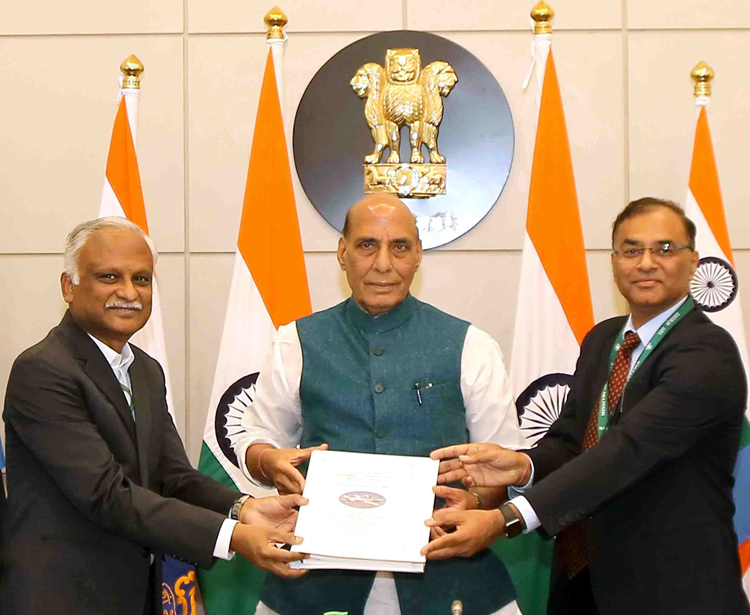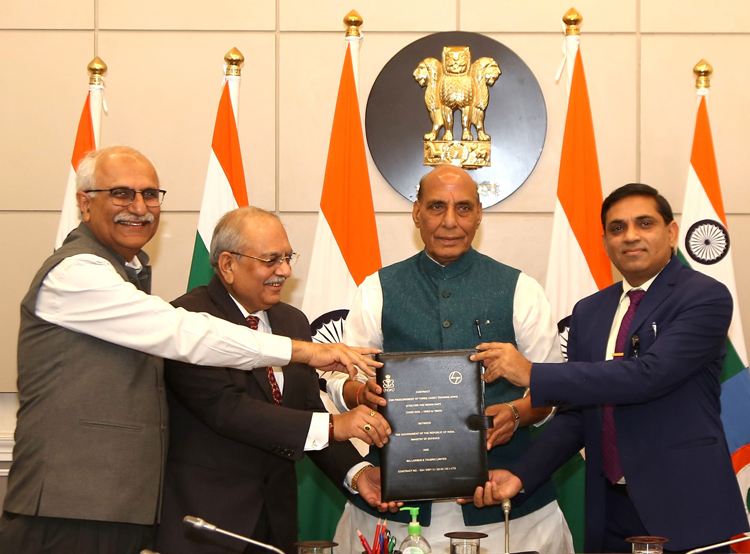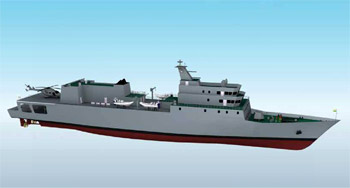INDIAN ARMED FORCES CHIEFS ON OUR RELENTLESS AND FOCUSED PUBLISHING EFFORTS

The insightful articles, inspiring narrations and analytical perspectives presented by the Editorial Team, establish an alluring connect with the reader. My compliments and best wishes to SP Guide Publications.

"Over the past 60 years, the growth of SP Guide Publications has mirrored the rising stature of Indian Navy. Its well-researched and informative magazines on Defence and Aerospace sector have served to shape an educated opinion of our military personnel, policy makers and the public alike. I wish SP's Publication team continued success, fair winds and following seas in all future endeavour!"

Since, its inception in 1964, SP Guide Publications has consistently demonstrated commitment to high-quality journalism in the aerospace and defence sectors, earning a well-deserved reputation as Asia's largest media house in this domain. I wish SP Guide Publications continued success in its pursuit of excellence.
- A leap in Indian aviation: Prime Minister Modi inaugurates Safran's Global MRO Hub in Hyderabad, Calls It a Milestone
- All about HAMMER Smart Precision Guided Weapon in India — “BEL-Safran Collaboration”
- India, Germany deepen defence ties as High Defence Committee charts ambitious plan
- True strategic autonomy will come only when our code is as indigenous as our hardware: Rajnath Singh
- EXCLUSIVE: Manish Kumar Jha speaks with Air Marshal Ashutosh Dixit, Chief of Integrated Defence Staff (CISC) at Headquarters, Integrated Defence Staff (IDS)
- Experts Speak: G20 Summit: A Sign of Global Fracture
Trainer Aircraft & Training Ships
On March 1, 2023 the Cabinet Committee on Security (CCS) cleared the deals for 70 x basic trainer aircrafts and the three cadet training ships
 |
The Author is Former Director General of Information Systems and A Special Forces Veteran, Indian Army |


On March 2, 2023, the Ministry of Defence (MoD) signed two separate contracts; one with state-owned Hindustan Aeronautics Limited (HAL) for 70 x Hindustan Turbo Trainer-40 (HTT-40) basic trainer aircraft and the other with Larsen & Toubro (L&T) for three Cadet Training Ships. Both contracts have a cumulative cost of 9,900 crore. The contracts were inked in the presence of Defence Minister Rajnath Singh. A day earlier on March 1, the Cabinet Committee on Security (CCS) headed by Prime Minister Narendra Modi, had cleared the two deals; 70 x basic trainer aircrafts costing 6,838 crore and the three cadet training ships costing 3,100 crore.
Trainer aircraft are a long standing requirement of the Indian Air Force (IAF) for imparting basic flying training to raw IAF pilots. Currently, the IAF is providing ab-initio training to raw pilots on Swiss-origin Pilatus PC-7 MkII planes and Kiran Mk-1/1A trainers. Subsequently, those training to become fighter pilots further train on the British-origin Hawk advanced jet trainers.
Trainer aircraft are a long standing requirement of the Indian Air Force (IAF) for imparting basic flying training to raw IAF pilots
On July 14, 2018, Swiss aircraft manufacturer Pilatus had handed over its 75th PC-7 MkII training aircraft to IAF marking the final delivery under a contract signed in 2012. First pre-production of Kiran-1 trainer aircraft delivery to the IAF was made in March 1968. Later production aircraft were fitted with hard points under each wing for weapon training and re-designated as the Kiran IA. A total of 190 Mk I and 1A aircraft were built. Details of trainer aircrafts lost in accidents is not known but according to news reports of July 2022, the IAF by then had lost 152 pilots and 534 aircraft, in crashes in past 30 years.
The HTT-40 trainer is a turboprop aircraft possessing good low speed handling qualities and provides better training effectiveness. This fully aerobatic tandem seat turbo trainer has an air-conditioned cockpit, modern avionics, hot re-fuelling, running change over and zero-zero ejection seats. The HTT-40 trainer aircraft contains approximately 56 per cent indigenous content which will progressively be increased to over 60 per cent through indigenisation of major components and subsystems. The HAL plans to engage the domestic private industry, including MSMEs, in its supply chain. The procurement has the potential to provide direct and indirect employment to thousands of individuals spread over more than 100 MSMEs.
The HTT-40 trainer is a turboprop aircraft possessing good low speed handling qualities and provides better training effectiveness
Provision of the HTT-40 trainer aircraft will meet the shortage of basic trainer aircraft of Indian Air Force to train newly-inducted pilots; especially with the voids having increased due to basic trainer aircraft figuring on the long list of weapons and systems that India has imposed an import ban on in the last 30 months. Procurement of the 70 x HTT-40 aircraft will include associated equipment and training aids including simulators. Being an indigenous solution, the aircraft is configurable for upgrades to incorporate the futuristic requirements of the Indian Armed Forces. The supply of these 70 x HTT-40 basic training aircraft is expected to be spread over six years.


The indigenously designed, developed and manufactured Cadet Training Ships by L&T will cater to the needs of officer cadets, including women, at sea after their basic training to meet the future requirements of the Indian Navy. The ships will be constructed at L&T’s Kattupalli facility in Tamil Nadu. The delivery of these training vessels is expected to begin in 2026. By what year all three Cadet Training Ships will be delivered to the Navy has not been spelt out.
The two deals inked for 70 x Trainer Aircraft for the IAF and the 3 x Cadet Training Ships for the Navy with HAL and L&T respectively mark yet another milestone in the Government’s resolve for self-reliance in the defence manufacturing sector. Not only has the Centre earmarked a separate budget for purchasing locally made military hardware, a slew of measures have been instituted to promote self-reliance in the defence manufacturing sector. These include increasing foreign direct investment FDI from 49 per cent to 74 per cent, and notifying hundreds of weapons and systems that cannot be imported.
The indigenously designed, developed and manufactured Cadet Training Ships will cater to the needs of officer cadets, including women, at sea after their basic training
Finally, the MoD needs to be careful that hasty issue of new lists banning imports are not merely to please the Prime Minister, in that, it should not adversely impact equipping of the Armed Forces. The indigenous production capability to fill the military’s voids must be taken into account together with the time frame in which the voids can be plugged in relation to the envisaged threat levels. Also, using the nomenclature “indigenous” when large percentage of components are imported is only fooling ourselves.
On February 28, 2015, it was reported that the MoD had selected 68 x HAL HTT-40 trainers and 38 x Pilatus trainers to replace the then trainer aircraft fleet, stating that this move was "commercially viable". On June 21, 2015, HAL chose the Honeywell Garret TPE331-12B-12B turboprop to power the trainer. HAL rolled out the first prototype HTT-40 trainer aircraft on February 2, 2016 and it first flew on May 31, 2016. After more than half a decade has elapsed since then to say that the HTT-40 trained still has only 56 per cent indigenous content does not present a happy picture.





